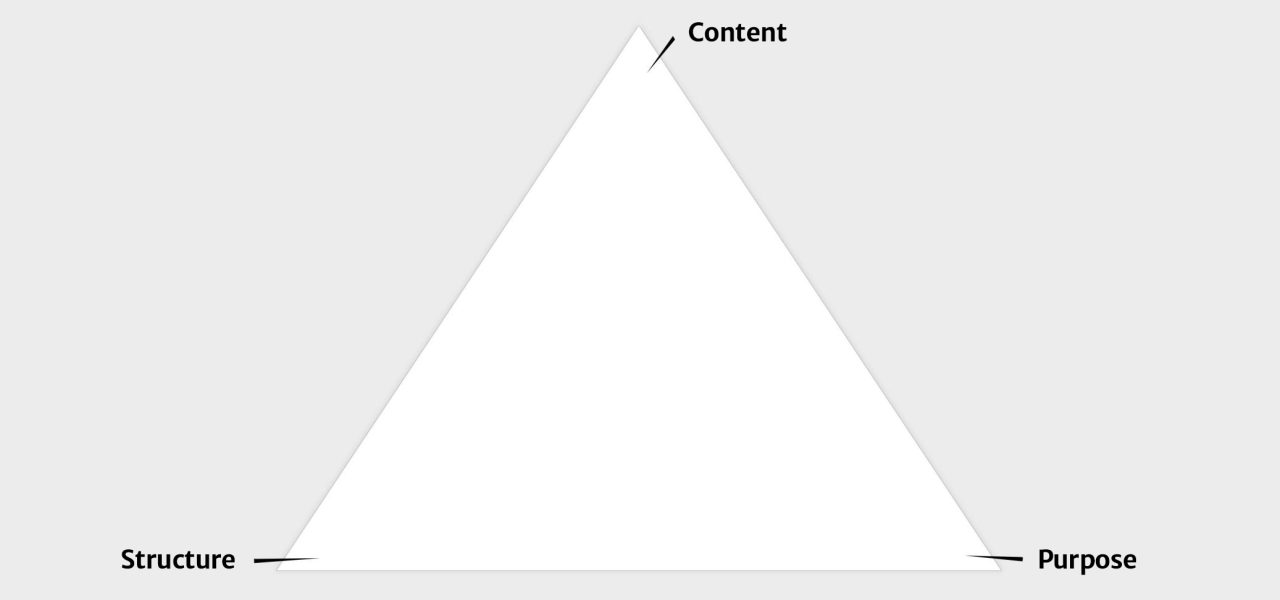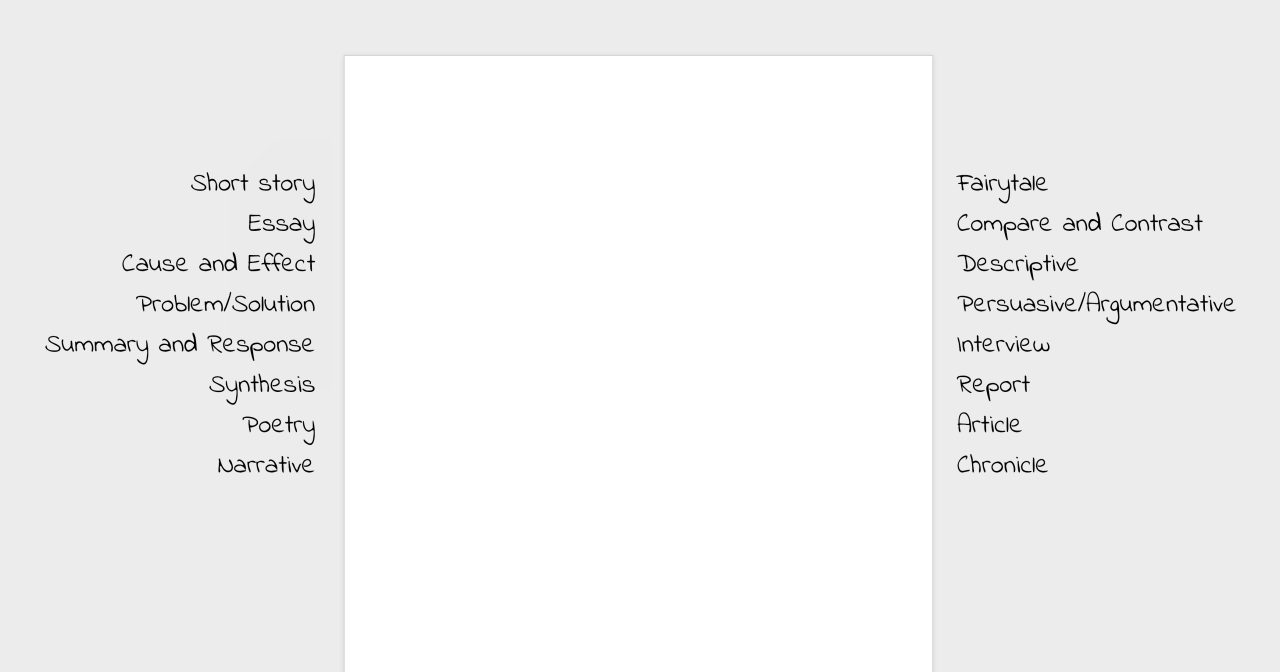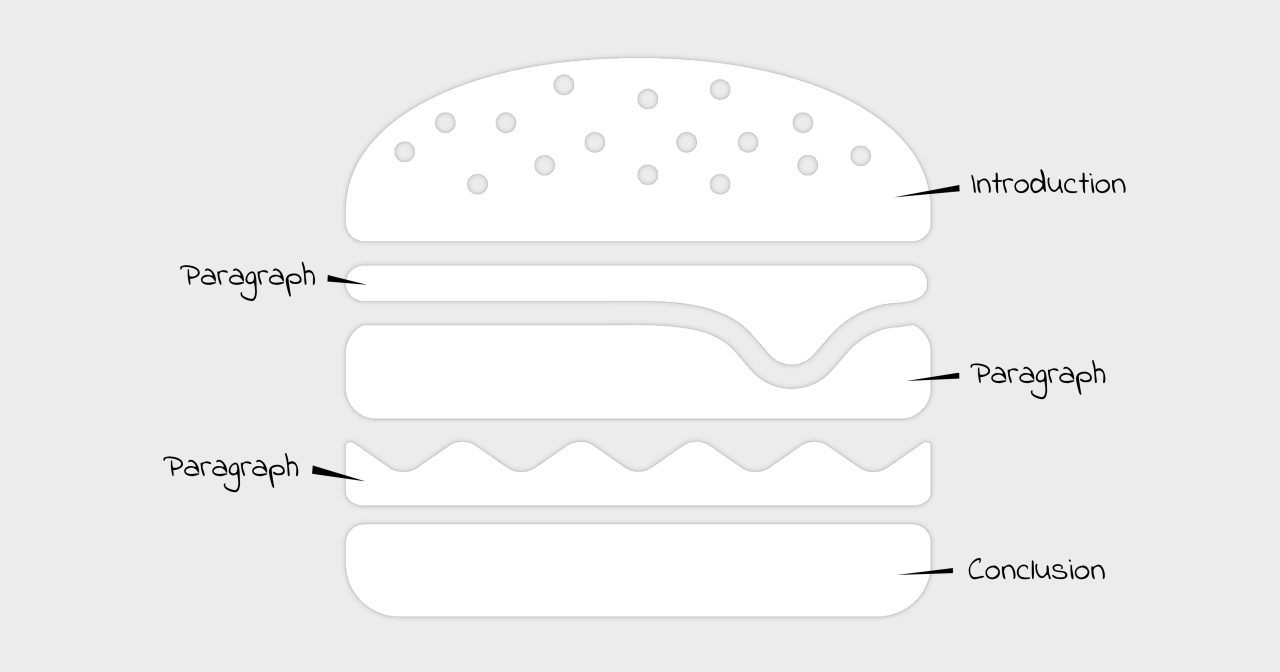Help, I have to write!
Where do I start?
Writing is work
Writing is work and quality writing always takes a lot of effort. It might not seem all that hard when you first look around the room and see everyone typing away. However, if you want to write something well, it takes effort and guts.
The most important thing in writing is the preparation work you do before you start writing. This is where good ideas appear. Forget about great ideas magically appearing as you go – it’s time to roll up your sleeves and get down to work. Here we go!

Blank Word-bakgrunn

Skrivetrekanten på engelsk i Word-format
What type of text am I writing?
There are several different directions you can go in with your writing depending on the type of assignment you have been given, and if you are asked to write a fictional or non-fictional text:
- Fiction: narratives, short stories, and fairy tales
- Non-fiction (fact): newsletters, letters to the editor, news and debate/persuasive articles

Word-bakgrunn med engelske stilarter

Word-bakgrunn med sporsmal.
NON-FICTION
If you are going to write non-fiction, e.g. a persuasive text, you can do things a little differently. The goal here is to inform or convince the reader about something. So, you must stay factual, clearer, and write shorter than you would for a work of fiction. Writing structure is very important, which is why many students prefer to write non-fiction texts. A good start is to organize your writing into a five-paragraph essay. The first paragraph is for the introduction, the next three are the main body, and the last paragraph is the conclusion. More paragraphs can of course be added if needed. Think of it like a burger: the buns are the introduction and conclusion, and the layers between are the other paragraphs.

Word-bakgrunn med femavsnittsregelen
Keywords
Go back to your free-writing paragraph from earlier. Can you find three keywords that could be relevant for your assignment? If, for example, you have to write a convincing text for a newspaper debate about a route that is too dangerous for children to take to school, your free-writing paragraph may look like this:
It is so scary having to walk to school because cars drive by really fast, and in the fall, it gets really dark and spooky. The days are a little lighter in the winter, but then you have to walk in the middle of the road because there is so much snow and there are snow berms everywhere. I don’t know what to write, there are a ton of cars where we walk to school, and almost all of my friends walk too. Some ride their bikes and have to either ride them on the road or where we walk. It’s hard to ride your bike to school because the sidewalks are so narrow, and we don’t have any bike lanes. I don’t know what to write, but I think that it sucks that some of us are scared of being run over on the way to school. Maybe that’s why there are so many that get rides. It’s also not that cool having to walk in all of the exhaust fumes. Also, even though a lot of people have electric cars, that’s a little scary too because they don’t make any noise.
Notice that several key words/phrases that you can use for your paper have been highlighted.

Blank Word-bakgrunn
Topic sentences
The next step is to write three topic sentences using the words that you have highlighted. A topic sentence is a statement that makes a claim, like “cats are more intelligent than dogs” or states a fact, like “reflectors make it easier to be seen in traffic”. Your three topic sentences will be used to start each of the three body paragraphs in your essay. For the topic on dangerous routes to school, they would probably look something like this:
- The school route is dark and has poor visibility.
- We need a bike lane.
- A lot of kids get rides to school because they are too scared to walk.
Supporting sentences
Now you need to explain, develop, and support each of these sentences. It is best with examples. This is what we call supporting sentences. The following is an example of a paragraph with examples of the topic sentence (in bold).
The school route is dark and has poor visibility.
If you have ever walked along the school route to Russell school early in the morning, you have probably noticed that there isn’t much light. There are a lot of streetlights missing along the way, and it gets especially dark in the fall. That means that there can be some pretty dark mornings even at the beginning of the new school year. This is scary for both the kids walking to school and the cars driving by. Even though a lot of children use reflectors, there are also many who don’t. These roads are used by both pedestrians and cyclists, and things can quickly become dangerous. While the days get a little lighter when there is snow, that just makes the roads even more dangerous. The snowplows create a lot of high snow berms, and this means that children often have to walk in the middle of the road to get to school.
Try to write at least four to five support sentences for each of your topic sentences. Once you have done this, you will have three full paragraphs for the body of your paper.

Blank Word-bakgrunn
All done!
Writing can be difficult, but a lot of the actual work lies in the preparation: doing a good job of planning and following standard structure. Writing quality texts takes a little time, but you will see that it gets easier with practice. Have fun with your writing and find your own voice. You know that that is why you write, don’t you? Let your voice be heard!

Kul jente med laptop i fanget jubler over å egen innsats
Kilder:
- NTNU | Skrivesenteret (10.11.2021):
http://skrivesenteret.no/
- Intertekst (10.11.2021):
https://intertekst.portfolio.no/
- Norsksidene (10.11.2021):
https://norsksidene.no/web/
Bilde- og videorettigheter:
-
-
Skolerom
-
Skolerom
-
Skolerom
-
Getty Images
-
Skolerom
-
Skolerom / Getty Images
-
Skolerom
-
Skolerom
-
Getty Images
-
Skolerom
-
Skolerom
-
Getty Images
-



